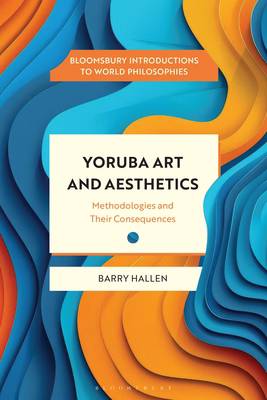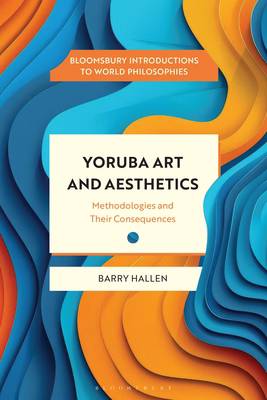
Je cadeautjes zeker op tijd in huis hebben voor de feestdagen? Kom langs in onze winkels en vind het perfecte geschenk!
- Afhalen na 1 uur in een winkel met voorraad
- Gratis thuislevering in België vanaf € 30
- Ruim aanbod met 7 miljoen producten
Je cadeautjes zeker op tijd in huis hebben voor de feestdagen? Kom langs in onze winkels en vind het perfecte geschenk!
- Afhalen na 1 uur in een winkel met voorraad
- Gratis thuislevering in België vanaf € 30
- Ruim aanbod met 7 miljoen producten
Zoeken
Yorùbá Art and Aesthetics
Methodologies and Their Consequences
€ 127,45
+ 254 punten
Omschrijving
An introduction to the art and aesthetics of southwest Nigeria using the writings of Yorùbá scholars and artists who have made these subjects their special interest over the last forty years.
Barry Hallen brings together the writings of four pioneering Yorùbá thinkers who write about the art and aesthetics of their own culture: J.R.O. Ojo, Babatunde Lawal, Rowland Abiodun and Wole Soyinka. All were based at the Obafemi Awolowo University, named Great Ife because of the faculty and students' conviction that it was committed to achieving all of the great things that a university community can. Each is responsible for developing indigenous concepts in which African art derives its importance and meanings in the world.
Never before has their work been set side-by-side. By treating their work as interrelated we see how when combined they offer a better and higher level of understanding of that remarkable and fascinating form of life associated with the name Yorùbá. Each chapter provides a 'taste' of their philosophy as they reveal what they have to say about how they view and value their art internal to their culture.
Hallen places attention on the methodologies each of them uses to arrive at and defend their ideas. Together they tell a story about how badly things can go when human cultures believe they are categorically different from one another. They also argue that the more comprehensive one's experience and knowledge of the culture is, the better one is prepared to appreciate the conception and interpretation of its art.
This is the first book of its kind to take such a discursive and analytic approach to Yorùbá art and aesthetics. Disentangling African art from Eurocentric stereotypes, it represents exciting new scholarship in the disciplines that have come to be known as African philosophy and African art history.
Barry Hallen brings together the writings of four pioneering Yorùbá thinkers who write about the art and aesthetics of their own culture: J.R.O. Ojo, Babatunde Lawal, Rowland Abiodun and Wole Soyinka. All were based at the Obafemi Awolowo University, named Great Ife because of the faculty and students' conviction that it was committed to achieving all of the great things that a university community can. Each is responsible for developing indigenous concepts in which African art derives its importance and meanings in the world.
Never before has their work been set side-by-side. By treating their work as interrelated we see how when combined they offer a better and higher level of understanding of that remarkable and fascinating form of life associated with the name Yorùbá. Each chapter provides a 'taste' of their philosophy as they reveal what they have to say about how they view and value their art internal to their culture.
Hallen places attention on the methodologies each of them uses to arrive at and defend their ideas. Together they tell a story about how badly things can go when human cultures believe they are categorically different from one another. They also argue that the more comprehensive one's experience and knowledge of the culture is, the better one is prepared to appreciate the conception and interpretation of its art.
This is the first book of its kind to take such a discursive and analytic approach to Yorùbá art and aesthetics. Disentangling African art from Eurocentric stereotypes, it represents exciting new scholarship in the disciplines that have come to be known as African philosophy and African art history.
Specificaties
Betrokkenen
- Uitgeverij:
Inhoud
- Aantal bladzijden:
- 208
- Taal:
- Engels
- Reeks:
Eigenschappen
- Productcode (EAN):
- 9781350476110
- Verschijningsdatum:
- 10/07/2025
- Uitvoering:
- Hardcover
- Formaat:
- Genaaid
- Afmetingen:
- 140 mm x 216 mm
- Gewicht:
- 394 g

Alleen bij Standaard Boekhandel
+ 254 punten op je klantenkaart van Standaard Boekhandel
Beoordelingen
We publiceren alleen reviews die voldoen aan de voorwaarden voor reviews. Bekijk onze voorwaarden voor reviews.








